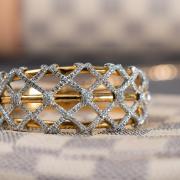Devon Life's Staff Writer Anna Turns reveals how reflexology can help a variety of conditions
Reflexology is an ancient holistic complementary therapy, which works on the feet through massage to help unblock energy channels within the zones of the body. Reflexology is like an MOT for the body and mind. Just like going to the hairdressers every few weeks, reflexology is the perfect maintenance therapy. Reflexology aims to restore homeostasis and the body’s natural balance. It helps to improve blood supply and circulation, and is an ideal way to relieve stress and tension.
Reflexology is like an MOT for the body and mind, the perfect maintenance therapy
Working reflex points is thought to help unblock the energy and rebalance the body’s systems in a positive way. Amazingly, some clients even feel specific changes in their body during treatment in relation to the points I am working on. As a biology graduate, I initially found the concept of ‘energy’ quite tricky to believe. However, after treating a lot of people with a diversity of conditions, I am absolutely convinced that specific points of discomfort on the feet do relate to energy blockages or imbalances in the corresponding part of the body.
There are various schools of thought about how reflexology works. If you think energy channels might sound a little crazy, think of the way nerves spread through the body like branches of a tree. There are more than 7,200 nerve endings in each foot, so direct pressure on specific areas of each foot would stimulate the corresponding body area.
I love reflexology because I have found it often works in a very powerful but unobtrusive and natural way. Each holistic treatment is tailored to specific client’s needs and takes into account their lifestyle, medical history, diet and emotional well-being to get the full picture. Every pair of feet tells a story, and the more people I treat the more I am amazed at how their feet correspond to what is going on in their bodies from week to week.
Some reflexologists undertake additional training to specialise in maternity reflexology. Women change so much hormonally during pregnancy, so reflexology is a wonderful way of easing these transitions, as well as preparing the mother-to-be emotionally and physically for the birth. Maternity reflexology also covers fertility problems. For instance, reflexology can help clients in advance of fertility treatment. One lady came to me after her first round of failed IVF, consumed by stress and desperate to get pregnant. After just one session, when she walked into my treatment room a week later the tension had lifted from her face and her shoulders had visibly dropped. I continued treating her weekly for one month in the lead-up to the second embryo transfer and two weeks later she found out her IVF had been successful. Reflexology treatments can continue throughout the nine months of maternity, although it is advisable to wait until after your 12-week scan unless you have specific symptoms (sickness, for example).
For most conditions, from insomnia to hot flushes, a course of four to eight weekly reflexology sessions (depending on the individual) are sufficient, while top-up treatments once a month are a great way to keep on top of things and give yourself some well-deserved time out.
Reflexology can help many conditions, including: • Stress and tension • Hormonal imbalances, such as PMT and menopause • Headaches, sinus problems and migraines• Infertility • Depression • Sleep disorders • Back pain and arthritis • Digestive problems, including irritable bowel syndrome
Please note that reflexologists should not claim to cure, diagnose or prescribe.
To find a qualified therapist registered with the Association of Reflexologists go to: aor.org.uk


























